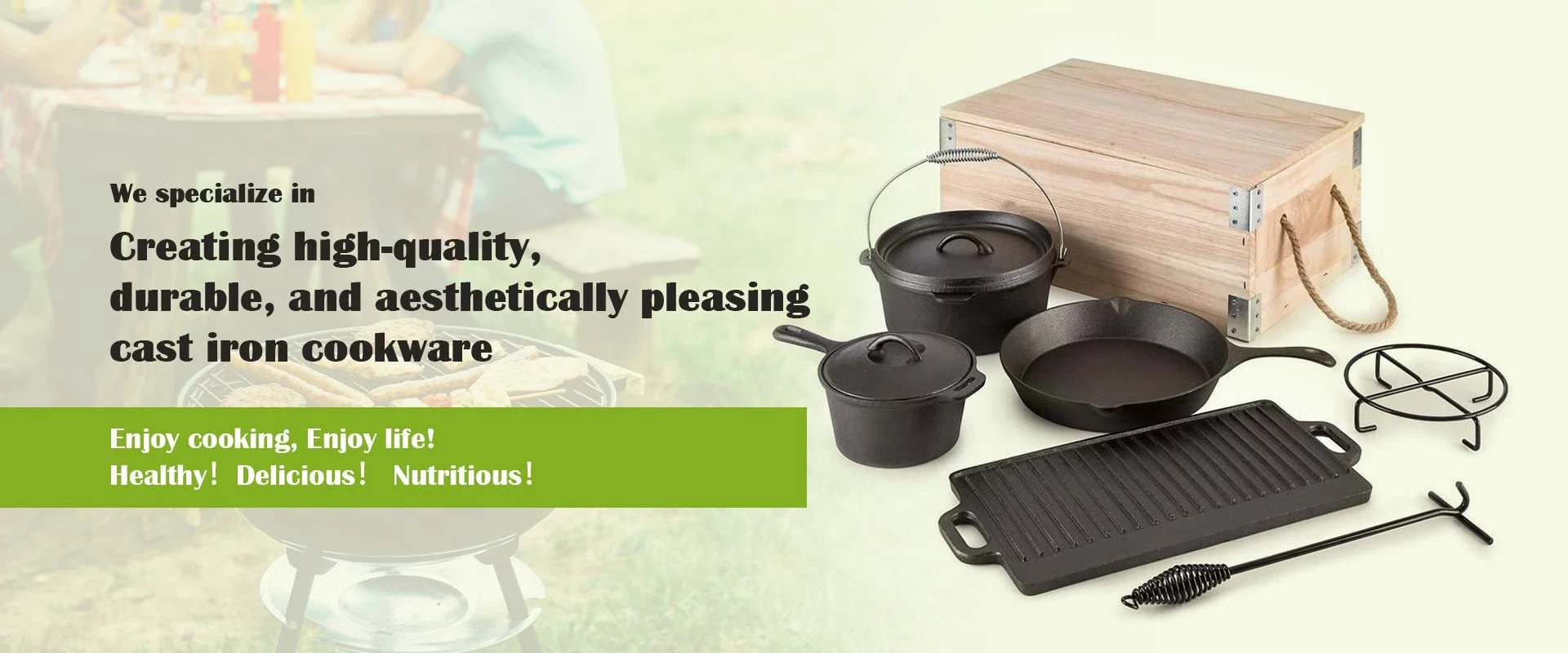
Comparing Cast Iron Cookware to Frying Pans for Optimal Cooking Performance
Cast Iron vs. Frying Pan A Comparative Analysis
When it comes to cooking, the choice of cookware can significantly impact the quality of the food and the cooking experience itself. Two popular types of cookware are cast iron skillets and traditional frying pans. While both serve the purpose of frying, sautéing, and searing, they have distinct characteristics, advantages, and disadvantages. This article will explore the differences between cast iron skillets and regular frying pans, helping you determine which is the best fit for your culinary needs.
Material Composition
The primary differentiator between cast iron skillets and frying pans lies in their construction. Cast iron skillets are made from molten iron poured into molds, resulting in a thick, heavy, and durable cookware. This material retains heat exceptionally well, allowing for even cooking and browning. Frying pans, on the other hand, are typically made from lighter materials such as aluminum or stainless steel, often with a non-stick coating.
The weight of cast iron can be seen as a disadvantage for those who prefer lightweight cookware. However, many chefs appreciate the sturdiness and longevity of cast iron. Frying pans, while more manageable, may not offer the same level of heat retention and distribution as cast iron, potentially leading to hot spots during cooking.
Heat Distribution and Retention
One of the standout features of cast iron skillets is their ability to distribute and retain heat. This attribute makes them ideal for searing meats and baking in the oven. Once a cast iron skillet reaches the desired temperature, it maintains that heat for an extended period, allowing for thorough cooking without constant adjustments to the heat source.
In contrast, traditional frying pans, especially those made with lightweight metals, heat up quickly. While this can be advantageous for quick cooking tasks, they often cool down rapidly once removed from the heat. This can make it challenging to achieve a perfect sear on meats, as frying pans may not retain heat well enough for this purpose.
cast iron vs frying pan

Cooking Techniques and Versatility
Both cast iron skillets and frying pans are versatile in the kitchen, but each shines in different cooking techniques. Cast iron skillets are excellent for frying, baking, and even grilling. Their high heat retention makes them perfect for cornbread, frittatas, and rustic pizzas. Furthermore, cast iron skillets can go directly from the stovetop to the oven, offering seamless transitions between cooking methods.
Frying pans, especially non-stick varieties, are ideal for tasks that require a delicate touch, such as cooking eggs or pancakes. The non-stick surface allows for easy food release and minimizes the amount of oil needed, making them a popular choice for healthier cooking options. However, as non-stick surfaces wear over time, they may require replacement, which adds to long-term costs and environmental considerations.
Maintenance and Care
Maintenance is another area where cast iron skillets and frying pans differ significantly. Cast iron requires specific care to maintain its seasoning—an oil layer baked onto the surface to create a natural non-stick finish. Proper care involves hand-washing with minimal soap, drying immediately, and applying a light coat of oil after each use to prevent rust.
Conversely, frying pans, particularly non-stick varieties, are often easier to clean, as they can usually be washed with soap and are less prone to rust. However, care must be taken not to scratch non-stick surfaces, as this can compromise their functionality.
Conclusion
In conclusion, the choice between a cast iron skillet and a traditional frying pan ultimately depends on cooking preferences and styles. If you value durability, heat retention, and versatility, a cast iron skillet may be the perfect addition to your kitchen. On the other hand, if you prioritize convenience, lightweight handling, and effortless cooking, a traditional frying pan may be more suitable. Both types of cookware have unique benefits that can enhance your culinary experience, making it essential to consider your cooking habits before making a decision.
-
Season Cast Iron Perfectly with GPT-4 Turbo TipsNewsAug.01,2025
-
High Quality Cast Iron Cookware - Baixiang County Zhongda MachineryNewsAug.01,2025
-
Premium Cast Iron Pan: Durable & Perfect HeatNewsAug.01,2025
-
High Quality Kitchen Durable Black Round Cast Iron Cookware Pancake Crepe Pan-Baixiang County Zhongda Machinery Manufacturing Co., Ltd.NewsAug.01,2025
-
Cast Iron Cookware - Baixiang County Zhongda Machinery | Nonstick, Heat ResistanceNewsAug.01,2025
-
High Quality Kitchen Durable Black Round Cast Iron Cookware - Baixiang County Zhongda Machinery | Non-Stick, Heat Retention, DurableNewsJul.31,2025


